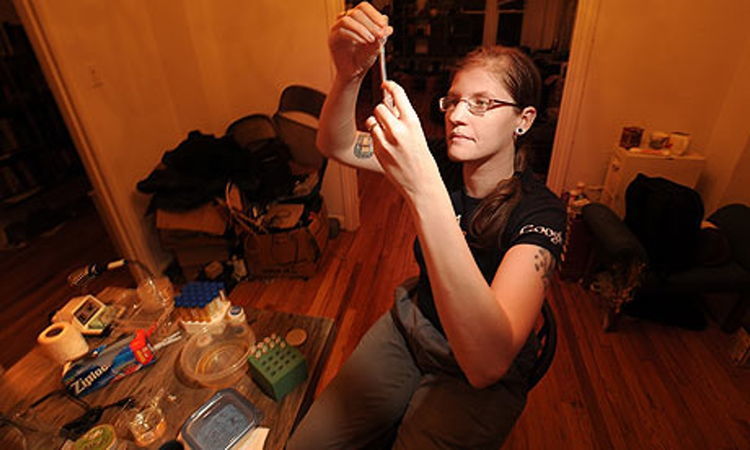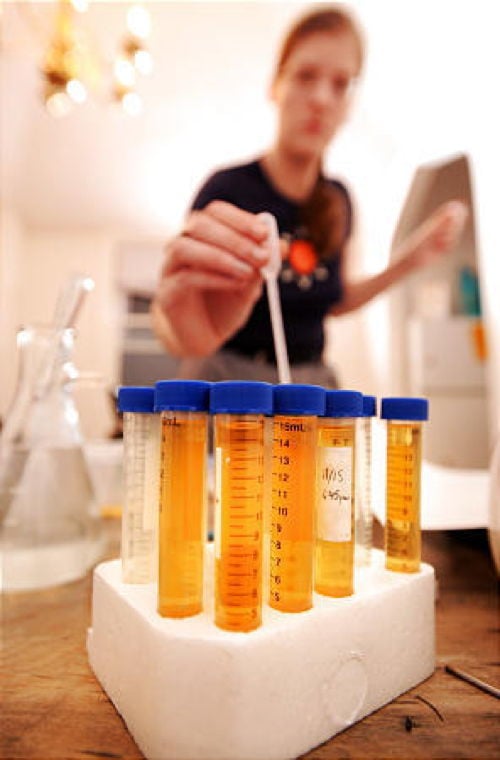Biohacking: Fluorescent Yogurt Saves Lives

Image Source: The Guardian
“We reject the popular perception that science is only done in million-dollar university, government, or corporate labs; we assert that the right of freedom of inquiry, to do research and pursue understanding under one’s own direction, is as fundamental a right as that of free speech or freedom of religion.”—An excerpt from “A Biopunk Manifesto,” written by leading biohacker Meredith L. Patterson.
Meridith L. Patterson does not hold a biology degree—she is a linguistics and computer science professional who works out of her kitchen and uses improvised household instruments. Yet, even without a high-end lab or the other trappings of professional, established researchers, Patterson is successfully working on producing a strain of the yogurt bacteria Lactobacillus acidophilus, which completes the human body’s metabolic pathway for vitamin C and thus prevents scurvy.
Patterson has already successfully created yogurt that turns fluorescent green if contaminated with the chemical melamine. This could prove to be a major breakthrough in food safety, as the highly toxic melamine can sometimes find its way into the food supply.

Image Source: Deseret News
Patterson’s role in the biohacking community extends well beyond the experiments she’s doing: She’s also regarded as one of the leaders of the movement. In “A Biopunk Manifesto,” Patterson questions where the 20th and 21st century equivalents of DIY scientists like Benjamin Franklin, Edward Jenner, or Marie Curie have gone. With the emphasis on institutionalized higher education, Patterson contends, scientific diversity has suffered. Patterson claims that biohacking can reclaim that precious lost diversity.





